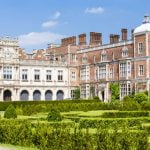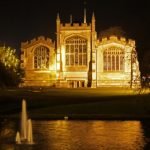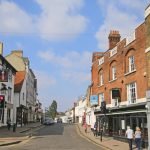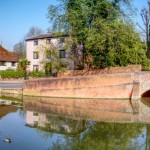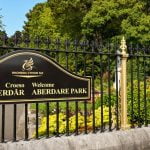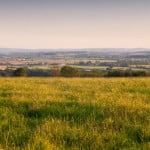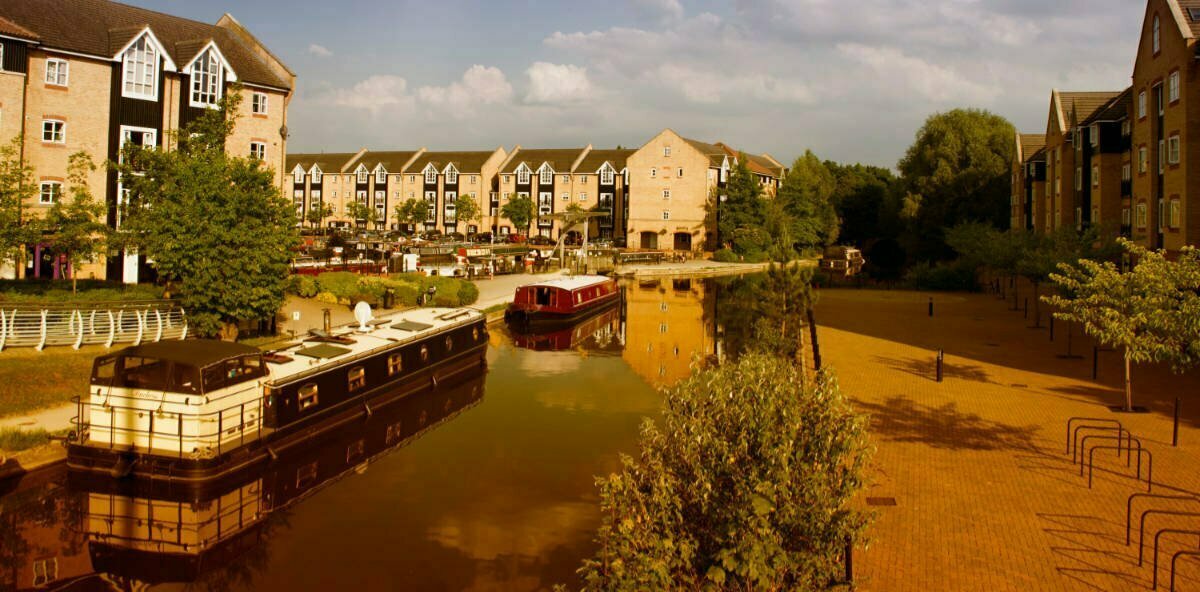
Hemel Hempstead The jewel in the heart of Hertfordshire.
Hemel Hempstead can be found 24 miles to the north and west of London. It is a vibrant large town with a population almost reaching 100,000 people. Although it was truly developed after WWII as a New Town, Hemel Hempstead has a history that dates back as old as the hills.
Read on to learn all there is to know about this small village, right up until the point where it became a big fish. Join us as we take another tour of an English town and review what there is to see and do in Hemel Hempstead.
The early history of Hemel Hempstead
The town was originally known by the name of Hamelamstede, which is how it is recorded in the Domesday Book, but we’re not quite ready for that yet.
Although people say that the town wasn’t first settled until the 700s, it was occupied by Romans at some point. Excavations have shown Roman ruins in the area. The first time that Hemel Hempstead was written about in the history books, was in AD 705. King Offa, of the Danelaw, granted the people who lived there the land enough to build a town.
For three hundred years it would remain a sleepy, slow-growing town. It was almost entirely unaffected by the invasion of the Normans, although ownership of the land changed hands. Farmers and milkmaids have nothing much to do with kings and queens. Thus, we really don’t know anything about it up until the Domesday Survey was taken in 1086.
It is recorded on the open Domesday site as being one of the hundred of Danish. A hundred was exactly what it sounds like, towns and villages were grouped into hundreds to make them easier to rule. The land of Hemel Hempstead belonged to Count Robert of Mortain at that time.
Count Robert of Mortain owned land worth £25 annually. The entry is interesting because it records that 2 Frenchmen were living on the land. This isn’t a note you would often come across; they must have been quite proud of their Frenchmen. He owned 30 ploughlands, 4 plough teams, and 20 men’s plough teams. He had meadows galore, 4 ploughs to work them with, woodland containing an estimated 1200 pigs, 4 mills, and 3.0 lands. All this means the Hemel Hempstead was not as small a town back then as we thought. Granted, there was a lot of woodland, but the 4 mills are an impressive figure.
Let’s not forget about the slaves, either. This lord of Mortain kept 8 slaves on the property. We don’t know where they would have come from, but the Danes and Early English kept slaves.
The Medieval Period
Hemel Hempstead left its early history with around 100 people. In 1140 one of the reportedly finest Norman churches was built in town, it’s called St Mary’s and it still holds services although it has had a few refurbishments since then. In the 1200s, someone elongated the spire to 200 metres tall, with the aim of making it suitable impressive. Someone really wanted God to notice them.
The lands around Hemel Hempstead would pass through numerous hands over the years, in the shape of Berkhamsted Castle, even belonging to an Archbishop of Canterbury at one point. It would flit from nobleman to nobleman until it came to the Earl of Cornwall in 1290 and he gave it away to the church. They proceeded to build a monastery on it, which Henry VIII later dissolved with some malice.
It wasn’t all that bad, though, since he visited the town and granted them a charter in 1539. He stopped over with his then wife Anne Boleyn, they stayed in Gadebridge Park which is now reduced to a tower near the church. Later, Elizabeth I would sponsor the local Boxmoor Trust of some 245 acres. She later granted it to Robert, Earl of Leicester. He placed the land into holding, making it usable only to those that lived there. To this day, these rulings have protected the area.
A redecorating job in Piccotts End revealed 15th-century wallpaper, so it must have been a well-off area. The paintings and paper were found in 1953, in a building that would once have been the cottage hospital Sir Astley Cooper designed in 1827.
Let’s stop there because the history is a little hazy from then up until it becomes a New Town. We are heading towards the industrial revolution, anyway, and that period always brought great change to areas.
Fun Facts about Hemel Hempstead
Welcome to the trivia section, where we try to dig up the best facts about an area to put a smile on your face. Here are the Five Minutes Spare favourite fun trivia facts about Hemel Hempstead:
- Marlowes Shopping District was home to the first multi-storey car park in Britain. It was designed to be built into the side of a hill and it was unveiled in 1960.
- Hemel Hempstead was voted Britain’s ugliest town in 2013.
- The Average salary is around 20% above the national average. Proving the rumour that yes, it is a posh town, even if it isn’t a pretty one.
- There is a roundabout in town that brings traffic to a frequent standstill in rush hour. Locals have taken to calling it ‘the magic roundabout’ because it is about as much use.
And on that cheerful gridlocked news, let’s look to the Industrial Era… It’s got to be less depressing.
The Industrial Revolution in Hemel Hempstead
By the 1800s, Hemel Hempstead had become a reputable market town. Several large Manor houses were built in the area by local landowners. Most notable among these was Gadebridge House, which belonged to the famous surgeon Sir Astley Cooper.
In 1762, the main road through town was built. The Canal was started in 1793 but didn’t reach the town until 1798. It opened once and for all in 1805 and would have brought fresh trade to the area. The London and Birmingham railway came next, arriving in 1837. This was early by comparison to other towns, which can be put down to its proximity to London. Interestingly, it was delayed because the aforementioned Sir Astley Cooper was certain that it would destroy the countryside and set homes on fire. People really did protest the railways.
In 1801, the population was 2,722 people. The Cottage Hospital opened in 1826 with the West Herts County Infirmary following in 1830. The Old Town Hall Theatre was completed in 1868 with the population rising to nearly 3,000 by 1861. The next twenty years attracted three thousand more people to the town, ad the football club was founded in 1885.
WWI
At the start of WWI, Hemel Hempstead was home to 12,888 people. Of course, many of them went away to war and didn’t return, and they did so in the PAL regiments which saw men from the same areas placed into the same regiments. This led to multiple areas being wiped clean of young men. You can read some of their stories on the Hemel at War pages.
World War II saw the area take heavy bombing. It was targeted deliberately by the Luftwaffe because home to a munition’s factory. 8 people were killed in a single incident in 1942 when they targeted Nash Mills instead of the nearby factories. Nevertheless, there were enough structures undamaged in the town that the government added it to the New Towns Act of 1946. This act was passed to promote growth in areas outside of London, but only because so much of London was bombed that there were countless families left homeless. Hemel Hempstead was big enough, and ugly enough, to take them in. Since then, things have never been quite the same.
The New Town of Hemel Hempstead
Although designated in 1946, the first residents didn’t arrive until 1949. The government bought nearly 6,000 acres of land to build on, then planned the expansions to be rolled out all the way through until the 80s. It was a massive undertaking that essentially built the town to near city status. Although the small town that makes up the original part of Hemel Hempstead is still remembered as the Old Town, it seems a shame that so much history was built over.
Interestingly enough, the original plans for the city saw it as a city inside a park, with lots of green spaces and outdoor areas. The locals protested and instead, the government built what you have now… a contender for the ugliest place in Britain. It just proves that we don’t know everything, and we shouldn’t interfere with professionals…
Interestingly, when the town was first erected, there was a waiting list of some 10,000 people that wanted to move there. Conditions inside of London at the time must have been horrific. There were several other New Towns on offer, as well, so Hemel Hempstead was still pretty enough to be a destination city of choice.
Factories were built in the 1950s to attract industry to the area. The Bennetts End district was erected after that, to house even more people. In 1952, the queen would visit shortly after he accession to lay the foundation stone for a new church in Adeyfield. This was one of her first-ever engagements and saw her shop at a local mall, which they named the Queen’s Square in her honour. This was the same year that the town centre was redeveloped to accommodate all those new people.
The M1 reached Hemel in 1959 with the first multi-storey car park going up in 1960. By then, the population was a little over 55k. By then, the water gardens had been built in the town centre and the government had decided to open up the Gadebridge estate to the public as a park. Up until the 70s, the town had access to the Bovingdon airport, but it was closed to public use around that time, subsequently becoming an RAF operated airport.
By the late 60s, most of the building work was done in town. There was a shiny new town centre, a railway that had expanded to include a nearby town for town centre space reasons, and each individual section of the town had its own village centre. There were major and minor roads, parks for the kiddies, and proper shopping malls for the adults. There was even an industrial sector that saw work issued to those that moved there. Although building would continue well into the eighties, it culminated with the population we see now, of almost 100,000 people.
Hemel Hempstead has undergone many changes over the years. First used as a stopping place for the Romans, it was owned by kings and Earls alike. It has been a village, a town, and a large town, and we don’t expect it to miss out on city status for too much longer. Hemel Hempstead gets a rough deal. It’s really not that ugly at all, and the people are friendly as they come. All in all, it makes for a great staycation destination no matter how big the family is.
Let’s leave the history to settle and move on to the most important questions of all: who the famous people from Hemel Hempstead are?
Famous People from Hemel Hempstead
If you add Hemel Hempstead to your summer holiday choice list, you won’t be disappointed in the famous people you might meet at the supermarket. Some of our favourites include:
- Ashley Beedle, a DJ from the Black Science Orchestra, is from here.
- Children’s author Fiona Dunbar lives here
- Tanya Louise Reynolds, a Hollywood film actress, was born here.
- David Vanlan, from Damned, is from Hemel Hempstead. No correlation.
- Talulah Riley, from many films but notably St. Trinians, is from this area.
And that’s a good enough list to be getting on with. Keep your eyes peeled in the streets, folks.
Attractions in Hemel Hempstead
Now we arrive at everyone’s favourite part of the tour guide, what you can get up to if you choose this location as your holiday destination for this year. Below, you will find all the best sights and sounds to see in Hemel Hempstead.
Historic Sights and Landmarks
One of the most notable landmarks in town, and also the top-rated attraction by most tourist’s accounts, is the Amaravati Buddhist Monastery in town. The building itself towers over town but the talks were given inside, the worship and the peace found, as well as the 6 foot tall solid gold statue of Buddha, all lend an interesting air of mysticism to the place.
St Mary’s church is still standing and still weighed down by the 200m tall spire. It is pleasantly decorated with frescoes on the inside and is well worth the tour. If you are of a religious nature, you can stop by on a Sunday and enjoy a service, or even join the parish if you live nearby. The spire of the church can be seen from just about everywhere in town. It’s a treasured local landmark that all can enjoy.
You can take a stroll down to Piccotts End where you can still see the wall paintings and 15th-century wallpaper that was taken out of one of the houses there. This display of public artwork is sealed away inside a Perspex box so that it doesn’t get damaged, but it is on display for all to see, for free. It’s one of the oldest sights in town. They appear to be ecclesiastical in nature and look quite beautiful.
Galleries and Museums
Slightly outside of town in Frogmore, you will find the Frogmore Paper Mill. Paper was manufactured throughout the area and marks an important point in the history of the town. As a result, this is one of many museums which are part of the Paper Trail, a factory tour trail that lets you get a great educational overview of the industrial era in Hemel Hempstead. They let locals in for free to see new exhibits, all the more reason to move to Hemel Hempstead.
Outdoor Attractions
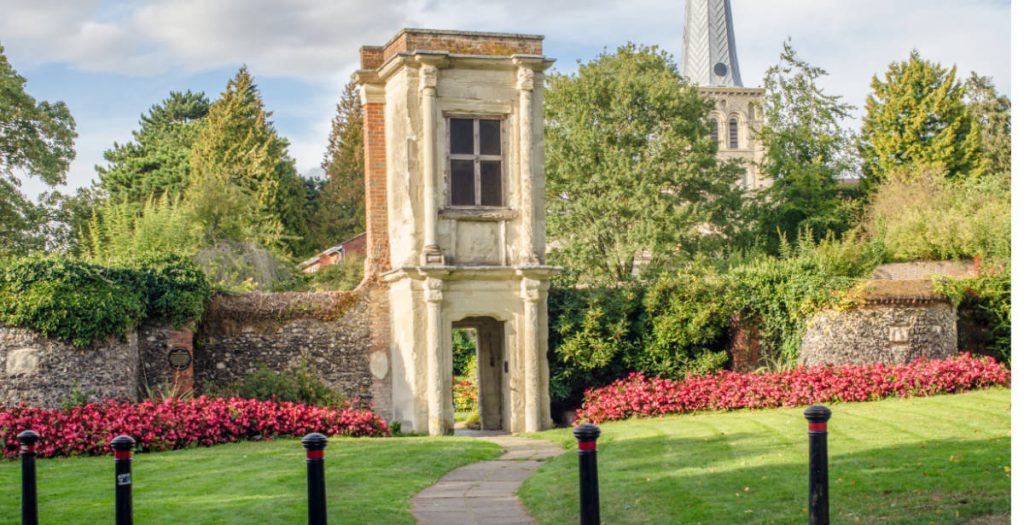
Image: MR M.MEDDAH/Shutterstock.com
Gadebridge Park is a beautiful wide-open space for locals to wander in. It is the park placed on the estates of the old manor house, and many structures can be seen in ruined form throughout. The gardens are well tended, and this makes a lovely place to sunbathe in August. It has a large interactive play area that is suitable for kids of all ages. There are picnic benches and a splash park part that you need to book in advance.
The Jellicoe Water Gardens are situated in the centre of town, named after their designer: Sir Henry Jellicoe. They sport a mixture of lovely scenic routes through flowerbeds and archways, and ponds filled with wildlife for all to enjoy. They were built in 1957 and were retained as a focal point of the New Town. The Gardens were restored in 2017 so they are fit to be enjoyed.
There is a Snow Centre in town which is basically a dry ski slope. They give lessons, so you can go along and try it even if you never have before. It’ll be a right good laugh, we assure you. You can choose from skiing or snowboarding, and you don’t have to worry about climbing stairs because they have one of those ski lifts to help you back uphill.
Sports and Recreation
The local football team are sometimes nicknamed ‘the Tudors’ but are actually called Hemel Hempstead Town FC. They were founded in 1885. Catch a match if you are around at the weekend, or otherwise visit the stadium to express your undying love.
We always make the same joke about this but it’s genuinely true. Each English town has at least three golf clubs nearby. In Hemel Hempstead, you can choose from the Shendish Manor Golf Course, the Little Hay Golf Complex, or the Centurion Club. All lie within 10 miles of town.
Shopping and Retail
Every Sunday morning and afternoon you can find a stallholders market down in the Old Town. Merchants have been trading in the city just like this for hundreds of years. This is part shopping day, part attraction, and part a piece of living history. Plus, you can find all sorts of goodies to get stuck in to.
For everything else that you need, head to the Marlowes Shopping Centre or the Queen’s Square. You should be able to find everything you might have forgotten at home.
Other Notable Attractions in Hemel Hempstead
If you are staying any longer than a few days, there are a bunch of other sights you should see. Check out these if you run out of things to do:
- Visit the Three Horseshoes Pub, which has a thatched roof and a definite Tudor feel to the architecture.
- Visit the Old Town Hall and the Old Town Hall Theatre to get inspired
- Take the Kids to Jungle Mania
- There’s a drifting track outside of town
- Or visit Planet Ice
The New Towns are enviable in the list of attractions they often have… so get out there and enjoy it.
How to Get There
Now you have been caught up on everything that we know about Hemel Hempstead, we might also tell you how to get there… Be warned, these directions aren’t good.
By Road
Follow that M1 out of London and you will reach it in about half an hour.
By Rail
Look for the Hemel Hempstead station on the Southern Railway Line.
By Air
Head to London Luton Airport as it is closest.
By Sea
Unfortunately, there is no sea access.
Five Minutes Spare
If you enjoyed reading through this guide, then you will be delighted to know that we have hundreds of others of the same ilk. Head over to our website to peruse the list and see if you can’t find your hometown. If you can’t, then give us follow on Facebook. We are bound to get round to it sooner or later.
